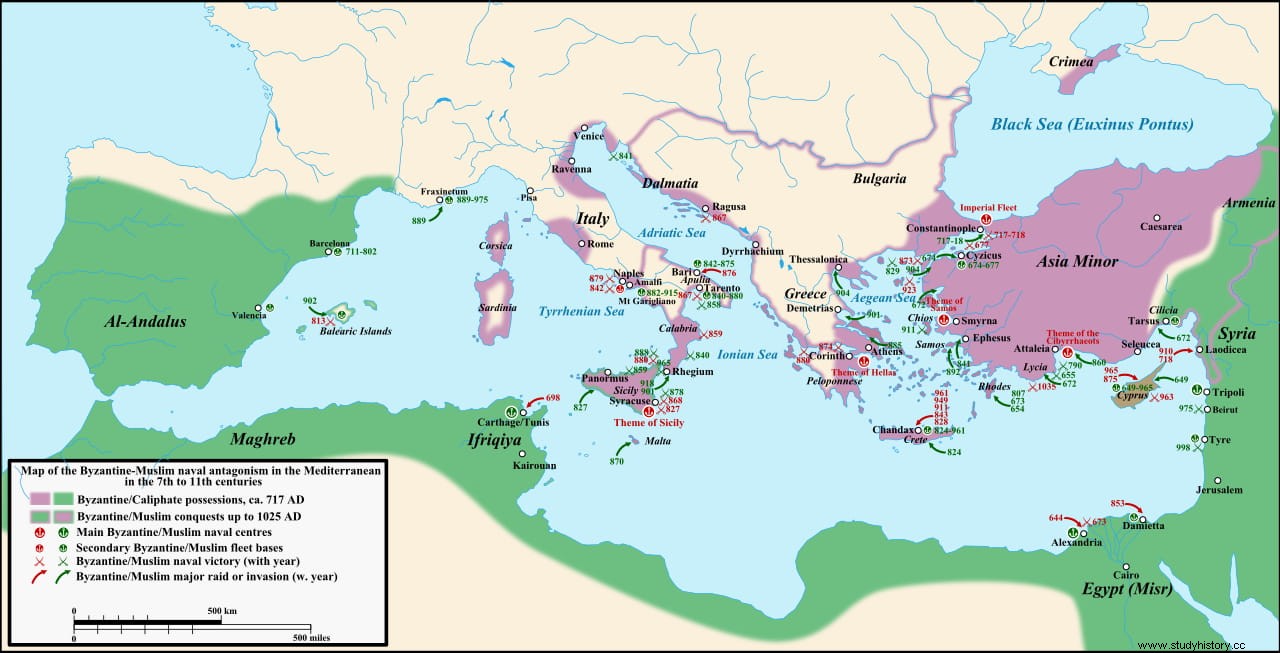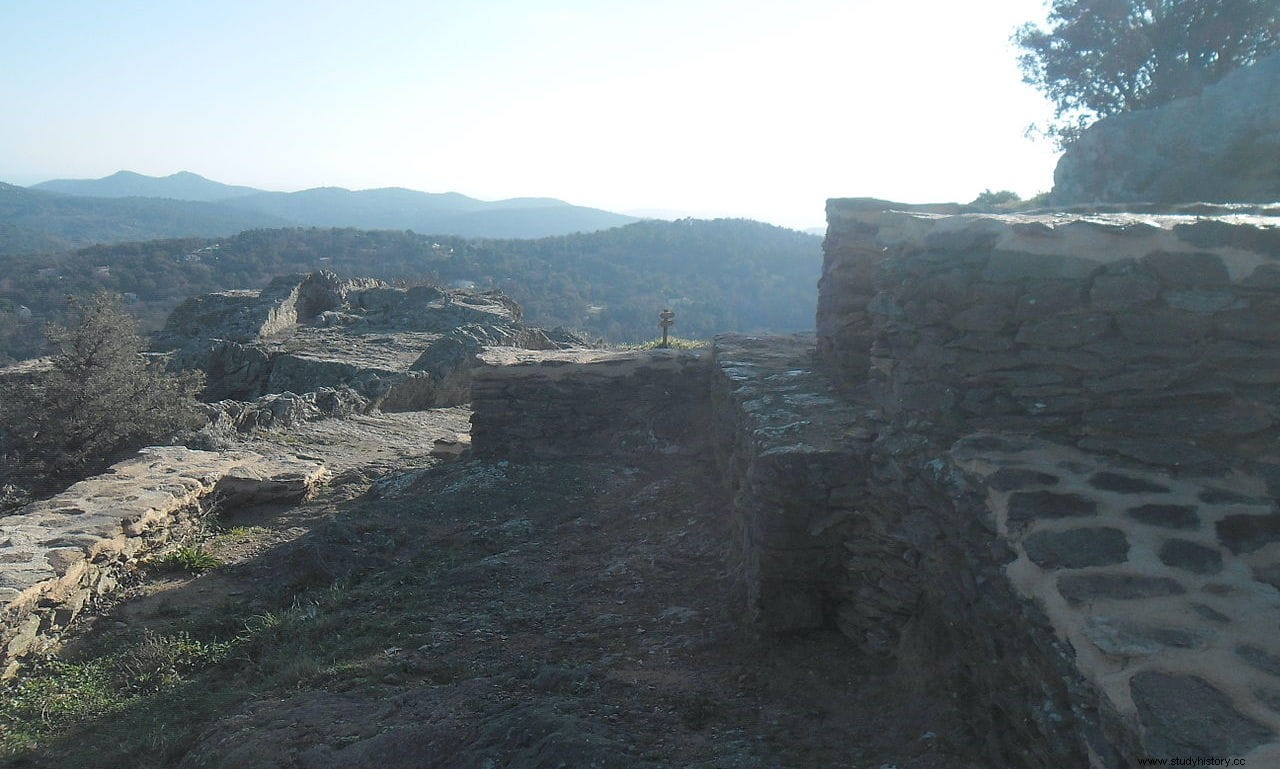It was the year 889 and Al-Andalus extended over much of the Iberian Peninsula. Muslims, Jews and converts lived there in a mixture that gave rise to the cultural landmarks of all known. The Christians who had been left under Muslim rule had two options, convert or seek their lives. Or both if things got ugly.
This may have happened to a group of them from the town of Pechina in what is now Almería. According to various sources such as Ibn Hawqal and Liutprand of Cremona, in that year 889, twenty of them sailed north towards the Gulf of Saint-Tropez.
Once on land they built a small fortification and protected it by planting thorny bushes around it. They managed to penetrate slightly inland and gain control of Fraxinet (in Arabic Farakhshanit), the current La Garde-Freinet.

Curiously enough, this area around Fraxinet appears on some contemporary Arab maps as an island. And in a way it was culturally and politically. The territory under Muslim control also included modern Saint-Tropez and modern Ramatuelle and its peninsula.
According to Ibn Hawqal, they dedicated themselves to farming and fishing, introducing innovations hitherto unknown in those parts. Other sources strongly state that their main activity was piracy and looting. Proof of the latter could be the numerous wrecks of sunken ships found on its coast.
The Cordovan historian Ibn Hayan mentions that when Abderramán III established peace treaties with some Frankish leaders in the year 939, a copy of these was sent to Nasr ibn Ahmad, whom he describes as the commander of Farakhshanit. Which would indicate a subordination of the enclave to the Umayyad caliphate.

Liutprand of Cremona says that they were nothing more than bandits who dedicated themselves to plundering nearby areas, even reaching Piedmont on their raids.
In the year 931 King Hugo, who at that time controlled much of Italy, attacked Fraxinet supported by Byzantine ships. The use by these of the famous Greek fire managed to overcome the Muslim ships, while Hugo's troops took the city. However, this would not yet be the end of the Almerian adventure. They convinced Hugo that having them as allies was much more advantageous for their own political ends. And so they were allowed to continue their little microstate.
But in the year 972 they made a mistake. They captured the abbot of Cluny while he was crossing the Alps. Once freed, the abbot sought revenge on him and organized a coalition of nobles led by the Count of Provence and Arduin Glaber, the Marquis of Turin, who laid siege to Fraxinet the following year. The Muslims were defeated, made slaves and definitively expelled from France. By that time the original twenty individuals had grown to more than 200.
During the years that they remained in Fraxinet they managed to conquer Toulon, Nice and Grenoble. Years later, in 1047, another group of Andalusians would try something similar by attacking the Lérins Islands, near Cannes, although without much luck.
